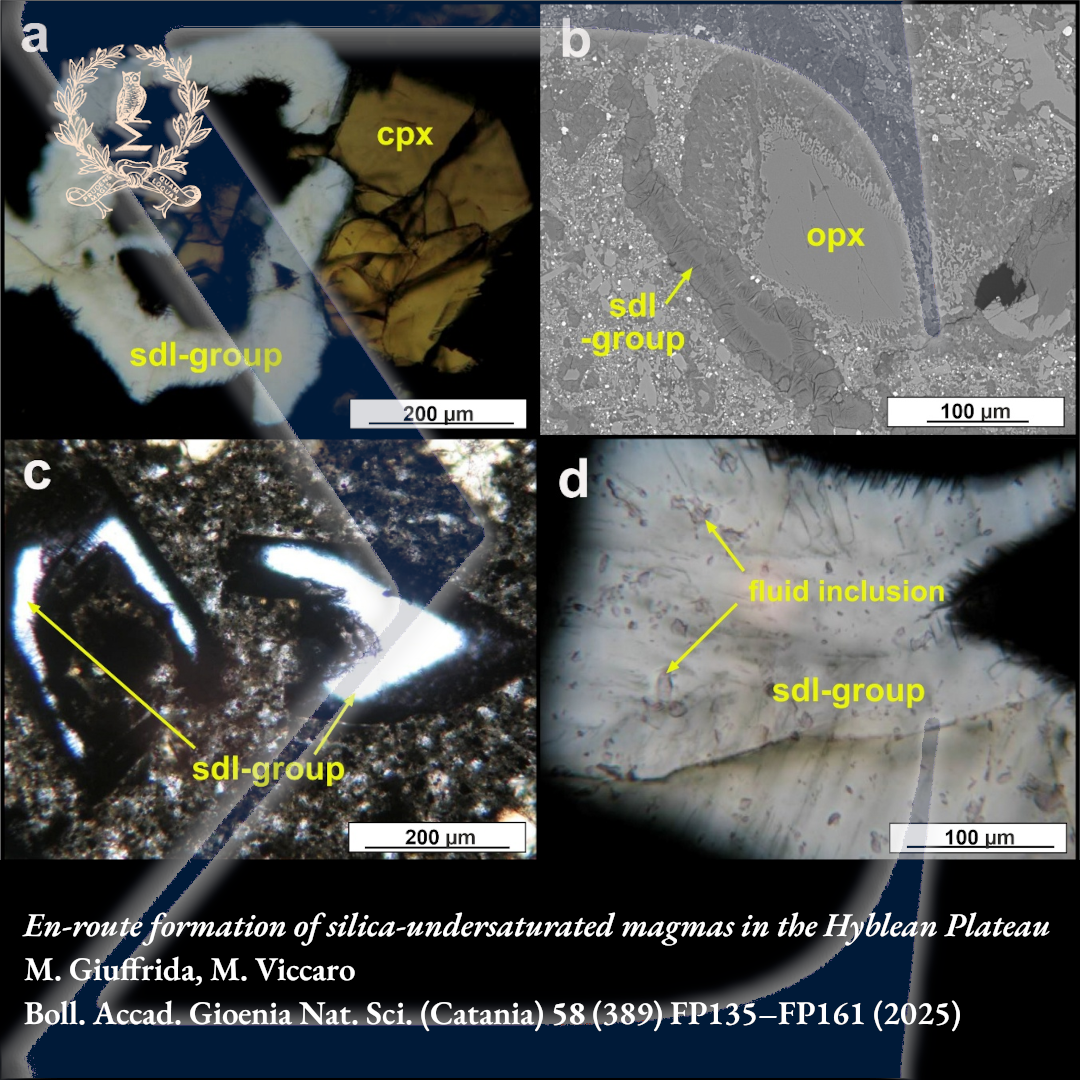En-route formation of silica-undersaturated magmas through interaction at shallow crustal levels: insights from nephelinites of the Hyblean Plateau, Southern Italy
Abstract
Neogene to Quaternary volcanic rocks from the Hyblean area (Southeastern Sicily) mostly consist of basalts with both alkaline and tholeiitic affinity, erupted in most cases in submarine settings. Minor basanites and nephelinites also occur. Nephelinites mark the resuming of the eruptive activity in this area during Late Miocene, after a non-magmatic period of about 50 Ma, either in form of diatremes or lava flows. Hence, nephelinitic lavas were the final volcanic products on Early Pleistocene. This work is based on whole rock analyses from literature and original in situ investigations by SEM-EDS/WDS of juvenile clasts from tuff-breccia deposits related to diatremic eruptions and lava flow effusions, together with a new unique sampling of a Quaternary lava flow in the area of the San Demetrio quarries, with all samples coming from the northern part of the Hyblean Plateau. Texture of samples varies from subaphyric (especially in the diatremic facies) to highly porphyritic, containing olivine, Ti-rich augite and Ti-magnetite phenocrysts immersed in a groundmass of Ti-augite, nepheline, abundant apatite, Fe-Ti oxide micrograins, rare reacting orthopyroxene and micro-phenocrysts pertaining to minerals of the sodalite group. The groundmass is also characterized by scarce amounts of interstitial glass, often enriched in S, Cl and P, with either haüyne-like or feldspar-like compositions. In the latter case, acicular µm-sized plagioclases are also immersed in the glass. All samples display exceptional chemical heterogeneity, a feature even more emphasized among the residual glass compositions. It is also worth noting that the coexistence of nephelinites and alkali basalts occurs at the scale of the same outcrop, as in the case of the San Demetrio lava flow. The origin of Hyblean nephelinites has been previously related to the influence of metasomatic agents, represented by carbonatitic melts, acting into the mantle source. A new perspective has been provided here, implying that the final, extreme heterogenous compositions of these Hyblean ultramafic volcanic rocks can originate from ascending basaltic magmas that have assimilated variable amounts of phyllosilicates and evaporite-like salts.


